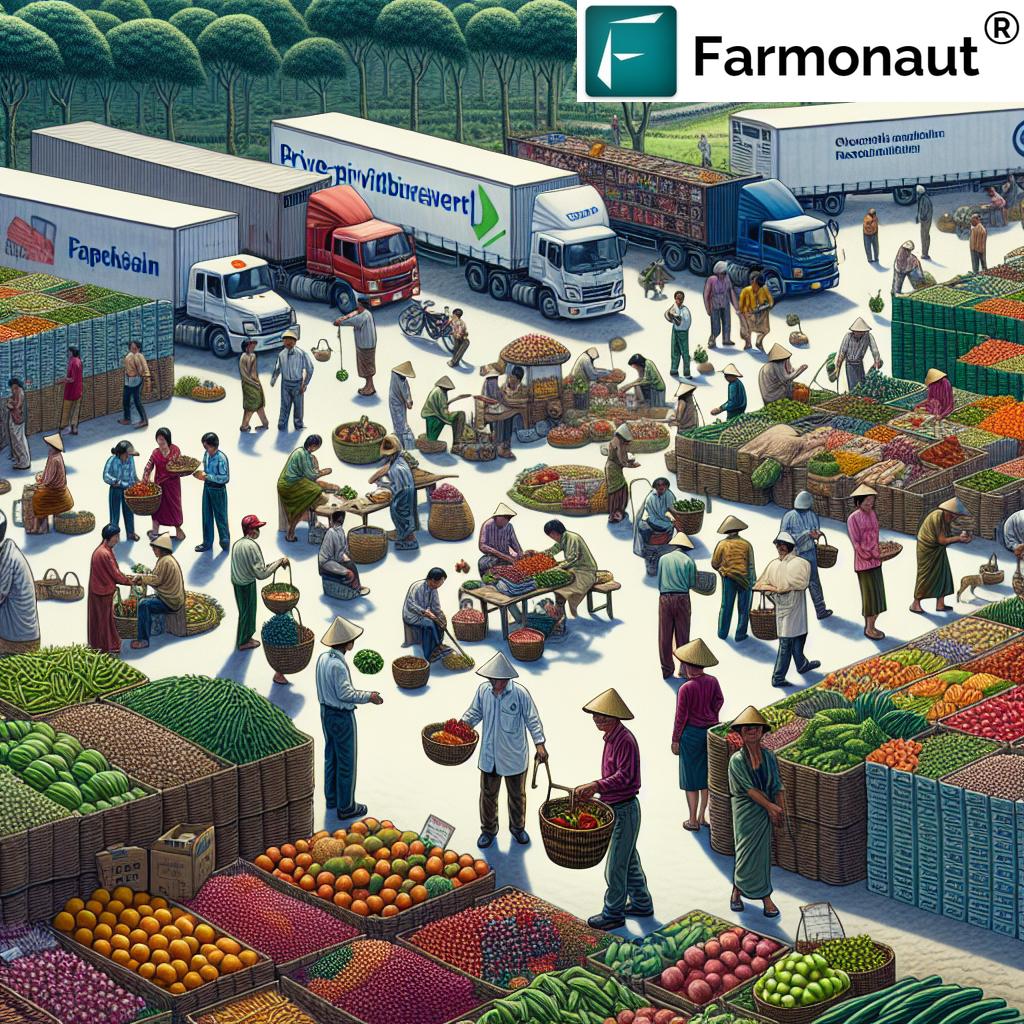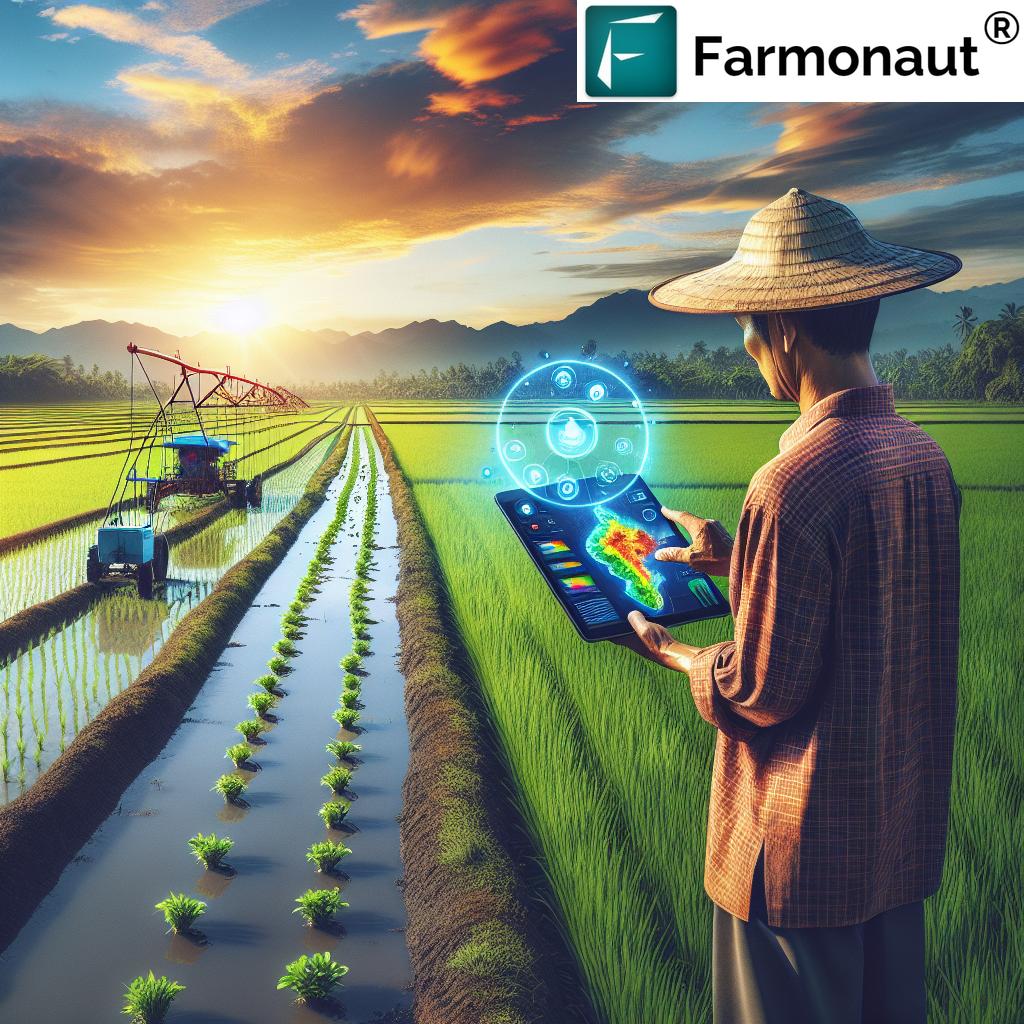Food Security in Asia: 7 Powerful Ways to Build Resilient Systems
“Asia-Pacific produces over 50% of the world’s rice, making sustainable practices vital for global food security.”
Introduction: The Urgency of Food Security in Asia
Food security in Asia is at a critical crossroads. Our region is home to more than half of the world’s undernourished people. We stand as key producers of global food, yet our systems are increasingly strained by climate change, land degradation, biodiversity loss, and surging demand. With the Asian Development Bank (ADB) expanding its financial and technical support for robust food systems, including the recently announced USD 26 billion boost to food initiatives, the urgency for transformative action has never been greater.
In this blog, we delve into seven powerful ways to build resilient food security systems in Asia-Pacific. We’ll explore sustainable food systems, private sector investment in agriculture, climate resilient agriculture, technical innovation, and how all these strategies, in synergy, help us improve nutrition, livelihoods, and environmental quality across our region.
“Private sector investment in Asia’s agriculture grew by 30% in the last decade, driving resilient food systems.”
Understanding the Challenges to Food Security in Asia-Pacific
To build truly resilient food security in Asia, we must first contend with a range of challenges undermining food systems, nutrition, and sustainable agricultural production:
- Climate Change: Unprecedented droughts, floods, and extreme heat events are already undermining agricultural production and threatening the livelihoods of millions across Asia and the Pacific.
- Biodiversity Loss: Our food systems account for 80% of global biodiversity loss, reducing ecosystem resilience and increasing vulnerability.
- Degraded Land and Water Resources: 70% of water withdrawals and half the region’s land are devoted to food systems, much of which suffers from overuse and pollution, threatening future productivity.
- Rural Poverty: Agriculture employs 40% of Asia’s workforce, but rural communities still face poverty, undernutrition, and malnutrition.
- Nutrition Deficits: Over 500 million people in Asia-Pacific do not have consistent access to diverse, nutritious food, causing a regional nutrition crisis.
- Vulnerable Supply Chains: Climate disruptions and global crises (like pandemics) reveal the fragility of current agricultural value chains, endangering food security and access.
Addressing these interconnected issues requires a comprehensive, systemic response—combining investments, technology, and bold leadership by governments, the private sector, and innovators like Farmonaut.
Comparative Overview: 7 Strategies for Food Security in Asia
| Strategy Name | Description | Estimated Impact on Food Security | Estimated Private Sector Investment Required (USD billion) | Environmental Sustainability Score (1-5) |
|---|---|---|---|---|
| Sustainable Farming Practices | Adopting integrated pest management, crop rotation, and efficient resource use to help reduce environmental impact of agriculture and boost productivity | High | 7.2 | 5 |
| Climate-Resilient Crops | Breeding and deploying crops resistant to drought, floods, and temperature extremes | High | 4.3 | 4 |
| Digital Agriculture Tools | Using satellite-based monitoring, AI, and traceability systems for smarter decision-making and support for small farmers | High | 6.1 | 5 |
| Policy Reforms | Enabling policies for land, resource access, & transparency to empower farmers and businesses | Medium | 1.8 | 4 |
| Supply Chain Innovations | Strengthening cold chains, logistics, and blockchain traceability to make agricultural value chain development more resilient | High | 3.5 | 4 |
| Public-Private Partnerships | Leveraging combined investment and expertise to scale up sustainable and resilient food systems | High | 8.1 | 5 |
| Nutrition-Focused Programs | Targeting nutrition deficits with comprehensive programs in the Pacific and across Asia | High | 1.0 | 4 |
Video: How Farmonaut’s Satellite Technology is Revolutionizing Land Use in Agriculture
The 7 Powerful Ways to Build Resilient Food Systems
To transform food security in Asia and secure our future, we must take a coordinated approach combining sustainable innovation, investment, smart management, and nutrition-focused solutions. Let’s break down each strategy with actionable detail.
1. Embracing Sustainable Food Systems
Our journey toward lasting food security begins with sustainable food systems. These are production, processing, and distribution chains that reduce environmental impacts, improve resource efficiency, and promote long-term food and nutrition security in Asia-Pacific.
- Conservation Agriculture: Adopting minimal tillage, integrated pest management, and crop rotation improves soil health and protects biodiversity in food production.
- Efficient Water Use: Smarter irrigation systems and drought-resistant crops help us conserve water, a scarce resource for many Asian farmers.
- Healthier Inputs: Reducing agrochemical dependency—fertilizer and pesticide run-off is a main cause of waterway pollution and soil degradation in Asia.
- Agroforestry: Integrating trees and shrubs supports carbon sequestration and carbon footprint reduction, contributing to environmental sustainability goals.
The Asian Development Bank (ADB) and our private sector partners are scaling investments in these practices. For instance, ADB’s expanded USD 40 billion food security program targets improvements in all phases, from farming and processing to distribution and consumption, aiming to alleviate hunger, improve diets, and create jobs across Asia and the Pacific.
Video: The Role of Artificial Intelligence in Agriculture – Farmonaut
2. Scaling Climate Resilient Agriculture
Given the increasing frequency of droughts, floods, extreme heat, and degraded natural resources, expanding climate resilient agriculture is a necessity. We must not only adapt our systems to withstand climate shocks but also mitigate agriculture’s own impact on the environment.
- Climate-Resilient Crops: Developing and promoting seeds that thrive under variable conditions secures the productivity of smallholders and commercial farms alike.
- Soil and Biodiversity Protection: Maintaining soil organic matter, investing in cover crops, and protecting landscape biodiversity ensure long-term production and ecosystem health.
- Disaster-Ready Infrastructure: Reinforcing rural infrastructure—like flood barriers, raised storage facilities, and climate-smart irrigation—protects livelihoods and supply chains.
Private sector investment in agriculture is pivotal in funding innovation and scaling solutions that address these risks, with ADB aiming for private sector funding to account for over 27% (USD 7.5 billion) of its expanded food systems program by 2030.
3. Empowering Farming with Digital Agriculture Tools
Advanced analytics, real-time advisory systems, and digital traceability are radically improving our ability to monitor, manage, and protect food production. These tools, such as those offered on Farmonaut’s platform, unlock major benefits:
- Satellite Monitoring: Farmonaut’s satellite-based crop health monitoring equips farmers with insights on NDVI (vegetation health), soil moisture, and pest threats—helping us optimize fertilizer, irrigation, and resource use at scale.
- AI-Powered Advisory: Personalized, data-driven recommendations delivered via systems such as Farmonaut’s Jeevn AI elevate productivity and efficiency, especially for small and medium farms.
- Product and Supply Chain Traceability: With blockchain-powered solutions, traceability ensures food safety, builds consumer trust, and speeds up regulatory compliance. Discover more about Farmonaut’s blockchain traceability for value chains.
- Efficient Logistics and Fleet Management: Farm management platforms also assist in resource and fleet optimization. Learn how Fleet Management technology is reducing operational costs for agribusinesses and supporting farm machinery safety.
Video: Farmonaut’s Remarkable Q3 2023 Milestones in Agricultural Sector
Video: Farmonaut | How to Generate Time Lapse
4. Innovative Policy Reforms and Governance
Effective policy support remains indispensable. Governments must update regulations to empower farmers, agribusinesses, and technology innovators while safeguarding natural resources and nutrition objectives:
- Transparent Land Tenure: Ensures farmers have secure, long-term rights to their land, promoting investment in productivity and sustainability.
- Smart Subsidy Programs for Small Farmers: Directs subsidies towards climate-smart seeds, digital agri-tools, and solar irrigation, rather than blanket fertilizer or water support.
- Research, Development & Training: Governments and banks like ADB need to fund research, support technology adaptation, and empower farmers through inclusive extension programs.
- Fiscal Incentives for Sustainable Practices: Tax breaks or reduced tariffs for businesses investing in carbon footprinting, traceability, and biodiversity protection.
We should encourage robust public involvement and inclusive policy processes, ensuring that policies reflect the voices of rural communities and smallholders.
5. Revolutionizing the Agricultural Value Chain
Upgrading our agricultural value chains is non-negotiable for resilient food security in Asia. Modern chains ensure that food is not only grown but efficiently processed, distributed, and consumed—enhancing access, nutrition, and economic opportunity.
- Cold Chain Expansion: Improved refrigeration systems, warehouses, and logistics infrastructure reduce post-harvest losses and ensure fresh, nutritious foods reach consumers throughout the region.
- Blockchain and Digital Traceability: Digital record-keeping enables rapid response to contamination, fraud, or recall events, reducing both business and nutrition risks.
- Supply Chain Digitization: AI-powered demand prediction, procurement, and automated quality control lower costs and extend market reach for small producers.
To learn more about transparent and digital supply chains, see Farmonaut’s traceability solutions for food and commodity businesses.
6. Fostering Public-Private Partnerships & Private Sector Investment
Public and private sector investments are both necessary and complementary. While government funding lays the essential groundwork, leveraging entrepreneurial energy and financial muscle of the private sector accelerates transformation:
- Direct ADB Support: The ADB has committed USD 18.5 billion in direct program funding to support governments in food system development by 2030.
- Private Sector Investment in Agriculture: A further USD 7.5 billion is dedicated to catalyzing companies, agribusinesses, and innovative startups. By 2030, private sector contributions are expected to account for over 27% of ADB’s grand USD 40 billion investment.
- Blended Finance Vehicles: Initiatives like the Natural Capital Fund (USD 150 million) help companies and farmers protect, restore, and sustainably manage the natural base of food systems.
- Access to Loans & Insurance: Platforms like Farmonaut’s crop loan and insurance tools reduce financing barriers for smallholders, with satellite-based verification expediting approvals and lowering fraud.
Unlocking private sector investment in agriculture is essential, not only for capital flows, but also for infusing technical efficiency and scaling up innovative business models across Asia and the Pacific.
7. Nutrition-Focused Programs in the Pacific and Beyond
Nutrition programs in the Pacific target the root causes of undernourishment and malnutrition, aiming to deliver not just calories, but diverse, nutrient-rich foods. These programs are a vital element of food security.
- School Meals: Government-sponsored nutrition programs that bring fresh, locally produced food to children improve diets and educational outcomes.
- Biofortification: Breeding staple crops with enhanced vitamins and minerals (e.g., iron-rich rice) addresses micronutrient deficiencies across vulnerable groups.
- Community Nutrition Education: Training on healthy consumption and food preparation uplifts not only individual health but also community resilience.
Such targeted nutrition initiatives go hand-in-hand with broader strategies to improve agricultural productivity and food distribution, ensuring food systems transformation delivers better health as well as food security.
How Farmonaut Powers Asia’s Food Security Transformation
At Farmonaut, our mission is to make satellite-driven precision agriculture both affordable and accessible to farmers, agribusinesses, and governments—not only in Asia but globally. Leveraging advanced satellite imagery, machine learning, and blockchain, we equip users to:
- Monitor Crop Health and Land Use: Our multispectral data reveals crop stress, pest outbreaks, water deficits, and more, enabling real-time, informed decision-making.
- Access Accurate, AI-Powered Advisory: The Jeevn AI Advisory System delivers actionable, personalized recommendations for crop and resource management, weather risk, and input scheduling—right to users’ devices.
- Trace Supply Chains and Combat Fraud: Farmonaut’s traceability platform helps companies ensure food safety and sustainability from farm to fork.
- Manage Fleet Logistics Efficiently: Fleet Management tools optimize agricultural machinery, fuel, and delivery, making operations cost-effective and reducing environmental impact.
- Support Resource Conservation and Sustainability: By tracking carbon footprints and helping managers plan for climate resilience, we contribute to protecting biodiversity in food production.
- Provide Data Access at Scale: Our API and API Developer Docs enable seamless integration with research, financial, and agri-enterprise platforms for scalable, systemic innovation.
Whether you’re an individual farmer looking to protect your crops, an agribusiness manager seeking supply chain innovation, or a government official driving food policy reform, Farmonaut delivers comprehensive, scalable, tech-driven solutions to strengthen food security in Asia-Pacific.
Getting Started with Satellite-Powered Farm Management
Ready to safeguard your agricultural operations, strengthen food security, and step confidently into the future of farming? With Farmonaut’s suite of digital agriculture tools, food system stakeholders have everything needed for effective management and transformation.
- Smallholders: Access real-time crop and weather updates, disease alerts, and resource advice through the easy-to-use Farmonaut mobile and web apps.
- Agribusinesses: Monitor large plantations, manage distributed teams, and scale fleet operations from anywhere.
- Policy-Makers and Advisors: Use satellite analytics to inform subsidy, insurance, and resource allocation across vast agricultural regions.
- Researchers and Developers: Harness real-time farming and weather data via the Farmonaut public API for institutional, corporate, or custom applications.
For large-scale administration and plantation monitoring, discover the Farmonaut Large Scale Farm Management Solution—ideal for big farms, NGOs, or government departments.
Frequently Asked Questions (FAQ)
- What is food security in Asia and why is it important?
Food security in Asia means ensuring all people in the region have consistent access to affordable, nutritious, and safe food. It is crucial because the region is home to most of the world’s undernourished, and disruptions threaten health, livelihoods, and stability.
- How does ADB support food security and nutrition?
The Asian Development Bank (ADB) funds a comprehensive food security program spanning USD 40 billion (2022–2030), supporting sustainable agricultural development, supply chain enhancements, nutrition programs, and more—targeting every stage from production to consumption.
- What are sustainable food systems, and how do they help?
Sustainable food systems use environment-friendly farming, processing, and distribution methods that conserve resources, protect biodiversity, and provide equitable livelihoods—all while reducing negative impacts on the environment.
- Why is the private sector important for food security?
Private sector investment in agriculture brings capital, technology, and operational efficiency to food systems, scaling up innovations and strengthening value chains. By 2030, private investments will be over USD 10 billion in regional food initiatives.
- How can digital tools like Farmonaut help small farmers?
Digital agriculture tools allow real-time crop monitoring, AI-powered advice, resource management, and supply chain traceability, making precision farming affordable and support for small farmers scalable across Asia-Pacific.
- What is meant by “agricultural value chain development”?
This refers to improvements in the stages from farming to processing, through distribution, to end consumption. Enhanced value chains mean less food loss, better access for consumers, and more stable livelihoods for farmers.
- How can we reduce the environmental impact of agriculture?
By adopting sustainable farming practices, using digital monitoring, employing climate-resilient crops, and tracking carbon footprints through tools like those from Farmonaut, we can make agriculture more resource-efficient and environmental-friendly.
- How does Farmonaut price its services?
Farmonaut operates via a flexible subscription system, with plans for individual farmers, enterprises, governmental users, and developers. Modular pricing accommodates everyone—from smallholder farms to large-scale operations.
- Can government agencies use Farmonaut’s API?
Yes. Farmonaut enables governments, NGOs, and business partners to integrate satellite data and analytics into their portals and decision-making systems through the robust API developer documentation.
Conclusion: Driving Change for Resilient Food Security in Asia-Pacific
Ensuring food security in Asia demands bold, coordinated, and data-driven action—from every actor in our food systems. By investing in sustainable agriculture, climate-resilient solutions, smart policy, digital platforms like Farmonaut, and nutrition-centric innovations, we can secure the future of food for billions.
Each of the seven strategies we’ve explored works best in synergy, reinforcing one another to create nutritious, reliable, and environmentally sound food systems—from our farms to every household in Asia-Pacific.
Let’s harness innovation, support our farmers, and join the transformation. Start by exploring Farmonaut.com, downloading the app, or integrating the API into your agricultural or food business.
Together, we can build a resilient, sustainable, and equitable food future for the Asia-Pacific region and beyond!


















